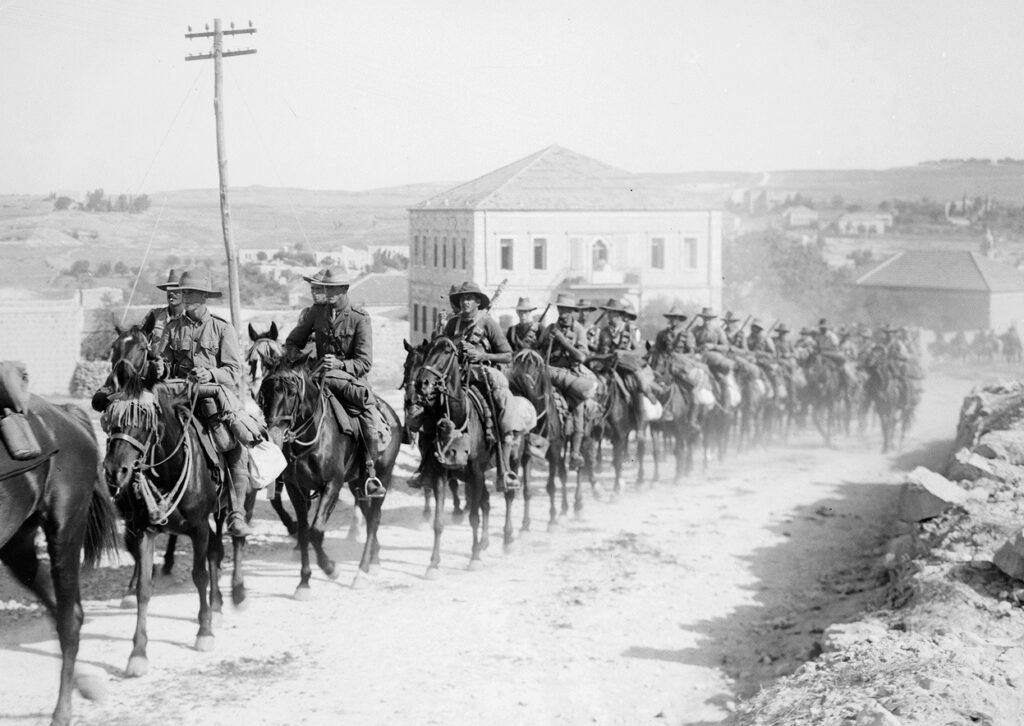
Since I started doing Great War riding and re-enacting/ living history one of the things that was always pushed was the need to ensure that I had an appropriate saddle. Be that an Officers pattern saddle or an 1902 UP saddle.
The more that I got into Great War Living History and the more that learned I found that there were various patterns of the 1902 saddle and also that the Universal Pattern saddle had evolved over time, all of which made sense.
As part of that learning process I encountered the 1912 Universal Pattern Saddle. While this looks very similar to the 1902 Saddle the difference is that the Steel Arches of the Saddle are hinged and this allows the wooden boards of the saddle to move and rotate in a limited manner. The purpose of this was to create a Saddle that could fit all varieties of horse and mule. Where a unit with 1902 UP saddles would need a variety of sized saddles (generally Medium (Size 2) and Large sized arches (Size 3)) the adoption of the 1912 UP saddle was meant to do away with the need for holding spare saddles or arches of different sizes.
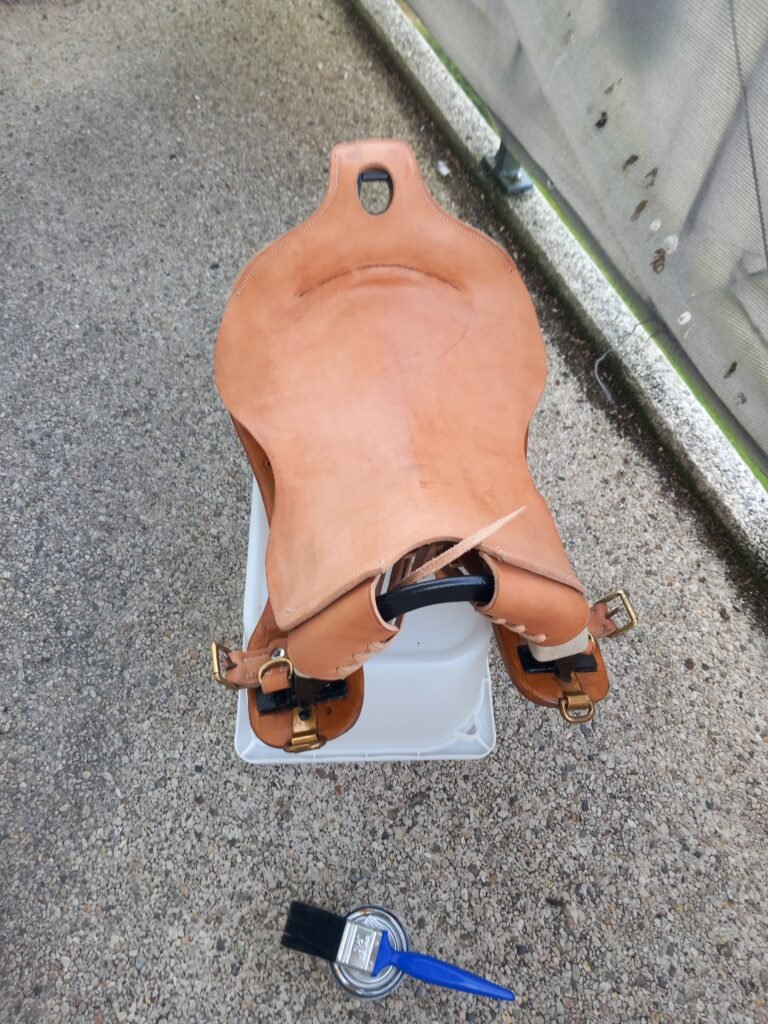

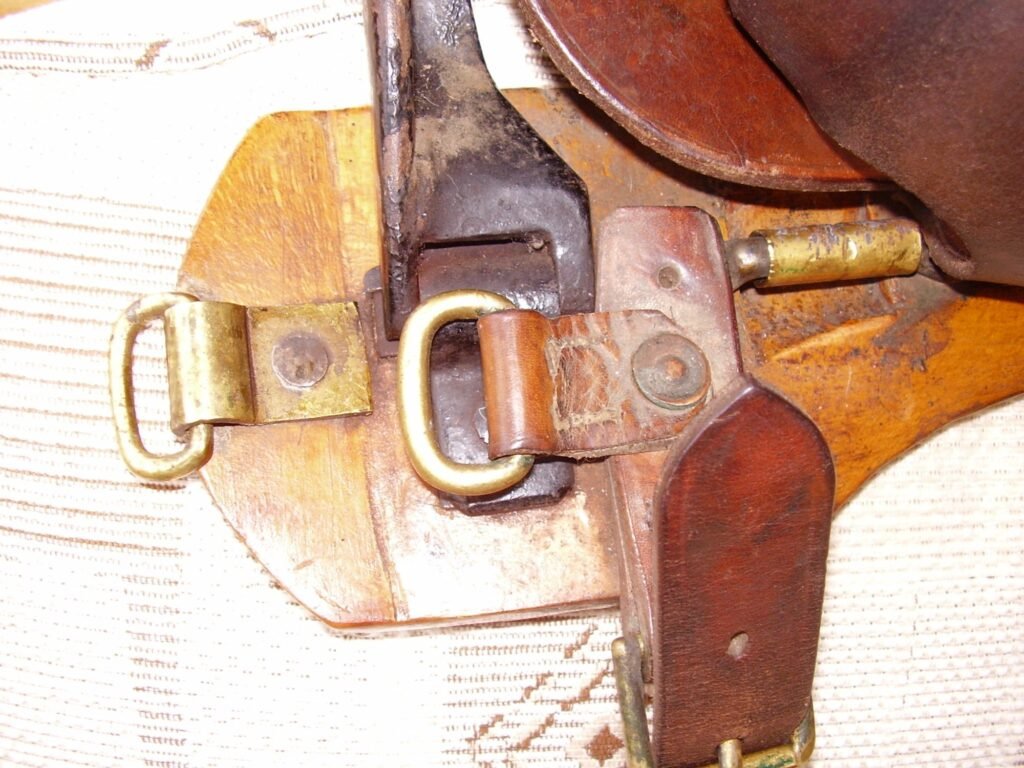

For Example a Royal Engineer Field Squadron was meant to hold saddles sized at the percentage rate of:
- Size 0 – 0% (this size of saddle was only issued to Mounted Infantry who tended to be mounted on Cob sized horses (less than 15 hands high)
- Size 1 – 10% (Small Horses)
- Size 2 – 50% (Medium Horses)
- Size 3 – 40% (Large Horses)
While this system was fine in peacetime or early in conflicts it was recognised that horses may lose condition, or change the muscle definition when worked/ exercised. in the initial instance some of this variation in the horse can be managed with the way that the horse blanket is folded but this is not the ideal. Also there is the fact that when remounts are provided (horse battle casualty replacements) they may not be of the same size as the horse that they replaced and as such would need different saddles.

The aim was that the 1912 UP saddle would solve this issue by providing a saddle that was “flexible” to meet the sizing and any changes in the physical condition of all horses.
However it wasn’t widely issued with British Units. There are comments that state that the Swivel connection was a point of weakness in the saddle and as such it wasn’t really adopted. This isn’t the case. Firstly the saddle was widely used by the Australian mounted units, particularly the Australian Light Horse and it was viewed as an excellent saddle, very suitable and robust for military usage, both fully loaded and on it’s own. The second, and probably the main reason is that by the time it was accepted for use by the Army the Great War had started and the reality was that the Army already had stocks of the 1902 UP saddles and their components. Also the fixed Arches of the 1902 were considerably easier to manufacture quickly and less complicated when constructing the saddles in comparison to the 1912 UP..
In terms of the Australians, they would have less stock of the older pattern saddles and may well have been in the process of “re-tooling” for the 1912 when the war came and the expansion of the Australian Army and in particular the Mounted Units it would have made sense to just make the new pattern of saddle.
It is certainly the case that most examples of the 1912 tend to be found in Australia.
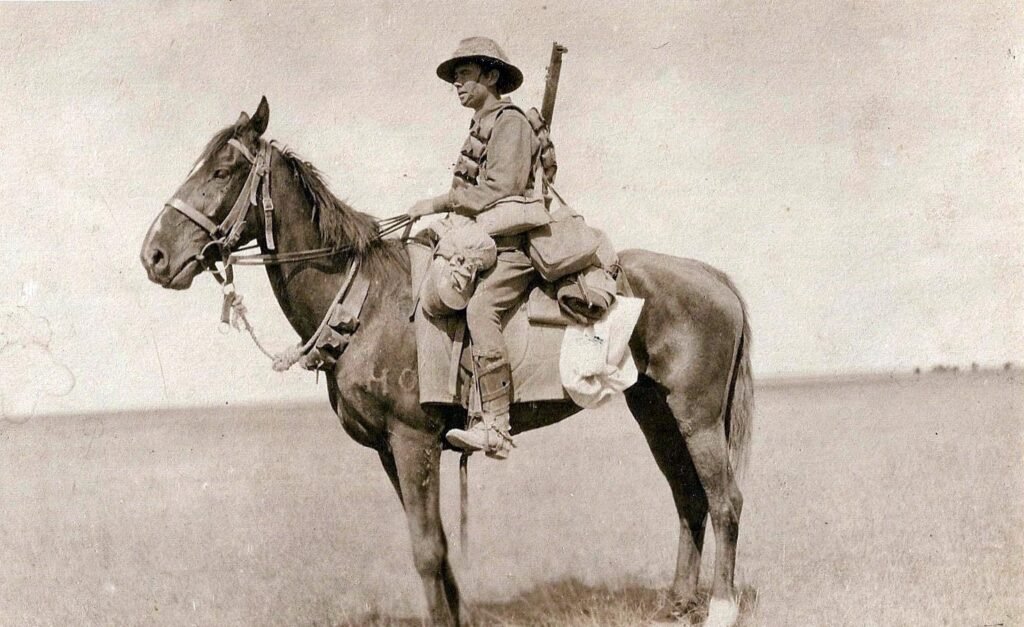
Over the last 18 months I’ve been linking in with Gerard Hogan in Australia, a Saddler and historian that is working with the Australian Army Museum, and the opportunity arose to obtain a 1912 UP Saddle for my own collection, both in terms of being able to use it for riding as well as for Living History displaying.
The basics of the saddle, such as the arches and boards were originals (from different original saddles) but the leather work would be new. I was asked if I wanted the leather work marked to a particular unit, so I kept it basic and asked that Gerard mark it with his own marks and also with unit marks appropriate to an Australian unit.
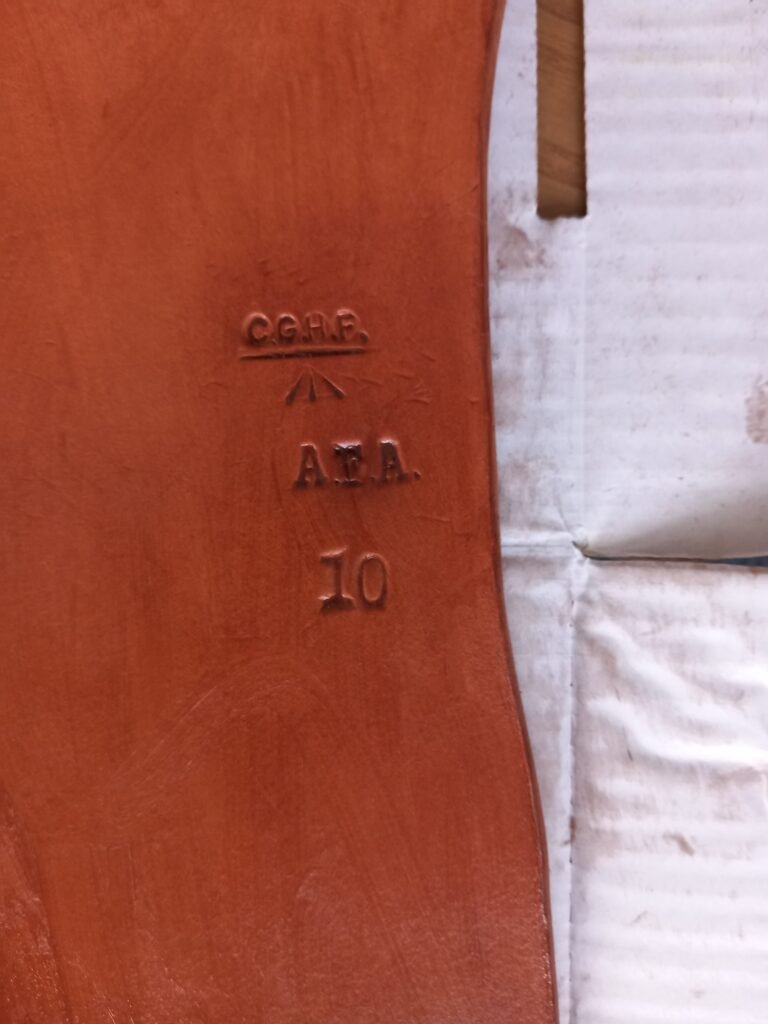
To that end there are stamp marks with Broad Arrows but with GH stamped next to them (Gerard Hogan) and also all parts stamped for 10th Battery Australian Field Artillery.
Part of the refurbishment process is to do some treatment work on the saddle. I was under very specific orders not to stain the leather dark, but to keep it the light tan colour as was the case in the Great War, the darkening of the leather was tend to a mix of it being used over a 100 years and also it not being properly cleaned!
So the orders were to make sure that all of the leather was fully coated with dubbing, I have been using Elico’s Gold Label Brown Dubbin, which has been ideal as it is easy to work into the leather.
So what is the plan for the saddle? The aim is to use it for riding and displays. My horse, Rosey, has high withers and back length that does not suit any of the UP saddles that I currently have:
- The 1890 UP is 24″ long
- The 1902 UP is 23″ long
- The 1902 UP (HC variant) is 22″ long and fits her back but not her withers and shape of her sides.
- The 1902 UP (Indian variants) are 21″ long, they fit by length but are too narrow.
- The 1912 UP is 21″ long and has the movement in the boards to hopefully fit her.
The 1912 will also fit Meg the mule. Also it allows me to show the variation and the evolution of the saddles over time. I will probably look to set the 1912 up as either a typical fit out for Australian Light Horse or for a Driver with the Sappers, Gunners or Army Service Corps, with a Greatcoat strapped to the front of the saddle and plain shoe case (and the Rifle to be slung across the back of the rider.)

Overall, a great addition and once I’m back in the UK full time I’ll be able to get it set up appropriately and hopefully get out for a plod in the local area with either Meg or Rosey using the saddle. More to come……


I am Tommy Hall from Namibia
I have been in the South African mounted infantry. we used your UP 1912 cavalry saddles. I am tasked to set up anti – poaching unit that is mounted. I have 6 trained mules and am training 26 horses for different organisations. main aim is to protect rhino and elephant and all other game.
I need parts to make and have made the Swivel tree cavalry saddles they work on both mules and horses. could you please advice how to obtain buckles,the metal arches and what would to use for the side panals.
Morning Tommy,
I’m going to contact you via your email with potential contacts for advice, The 1912 was very popular with the Australians and as such that tends to be where most of them can found. Also a getting the wooden side panels are bloody difficult to get, but I have spoken to a couple of timber working companies about the possibility of getting a set of fans scanned and then possibly fabricated from a CNC machine.
Regards
Will